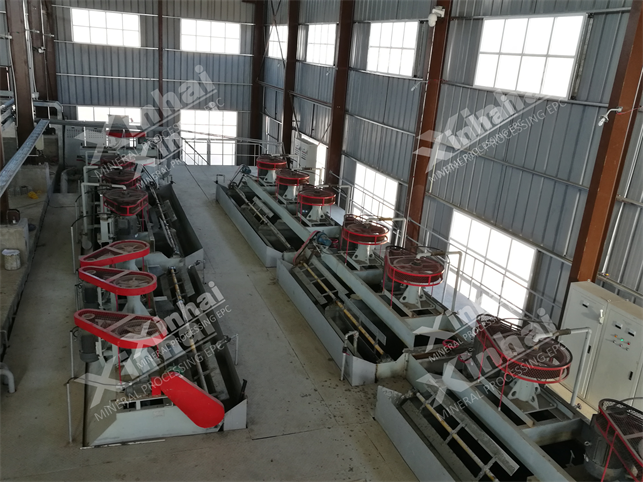Silver is an important precious metal, and in nature, most silver exists in the form of compounds in silver ores. The silver used in the industrial field is extracted from silver ores. In order to make the most of silver, various extraction methods have been developed. The main methods include reselection, cyanidation, flotation, lead method, and leaching. Among them, leaching is widely used and is a common method for extracting silver from silver ores.
Using reselection equipment such as gravity concentrators, centrifuges, etc., to separate silver-bearing ores. Reselection is based on the density differences of various minerals in the ore. Heavier ore particles settle faster, while lighter ones float. This step helps to further improve the silver grade by separating non-valuable minerals from silver-bearing ores.
Note that a flotation pretreatment may be required before reselection. This step aims to separate silver and other valuable minerals from silver ores, forming silver concentrates with higher silver grades.

For silver-bearing sulfide ores, the flotation method can be used for separation. By injecting air or other gases into the flotation cell, the silver-bearing ores float on the surface of the flotation liquid, achieving silver extraction.
Before silver flotation, the ore needs to be leached. The specific operation is to place finely ground ore into a leaching tank, usually using a leaching solution containing reagents such as cyanide. This step aims to react the silver in the silver ore with the reagents in the leaching solution to form a floatable silver compound.
After leaching, flotation equipment, usually flotation cells or flotation machines, is used to float the slurry from the leaching tank. In the flotation cell, injecting air or other gases enhances the floatability of silver ores, causing them to float on the surface of the flotation cell. Meanwhile, other non-silver minerals sink. This step achieves the preliminary separation of silver ores and other minerals.
The lead method for silver extraction uses lead as a reducing agent to convert the silver in silver ores into a lead-silver alloy. Subsequently, by oxidizing and then reducing this lead-silver alloy, pure silver is obtained.
The foam collected from flotation usually contains impurities. To further purify silver, the lead method is employed in smelting. In the smelting furnace, an appropriate amount of lead is added. Due to the high affinity of silver for lead, an alloy of lead and silver is formed, while other impurities are excluded.
(1) Peroxide Method: Silver ores are typically treated with a solution of sodium cyanide or hydrocyanic acid to produce soluble silver cyanide. Then, an oxidizing agent such as hydrogen peroxide is used to reduce the silver cyanide back to metallic silver.
(2) Zinc Leaching Method: Silver extraction is achieved using a solution of zinc cyanide, forming a soluble silver cyanide.
The steps of the leaching method for silver extraction are as follows:
(1) Ore Leaching
Crushed and ground ore is fed into a leaching tank or pool. In the leaching process, a leaching solution containing a cyanide reagent (usually sodium cyanide or hydrocyanic acid) is used. The cyanide reacts with the silver in the ore, forming soluble silver cyanide.
(2) Cyanide Silver Extraction
The chemical equation for the cyanide reaction is:
Ag2S+4NaCN+2H2O→2Na[Ag(CN)2]+Na2SO4This reaction converts silver sulfide (one of the main silver ores) into soluble silver cyanide.
(3) Stirring and Gas Injection
The slurry in the leaching tank is stirred to ensure thorough contact with the solution. Simultaneously, gas, such as air or oxygen, is often injected to facilitate the oxidation reaction.
(4) Precipitation Separation
After the formation of silver cyanide, separation can be achieved through a precipitation reaction. Typically, metallic zinc is added to the solution, reducing silver cyanide to solid metallic silver (Ag). The precipitated metallic silver can be separated by methods such as filtration.
The above briefly introduces five methods for extracting silver from silver ores, with cyanidation and leaching being more commonly used. These methods have a wide range of applications, especially for silver sulfide ores, where the extraction effects of these two methods are better, effectively improving recovery rates and concentrate grades."